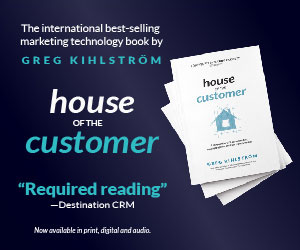This article was originally posted on The Agile World blog
Part 3: Creating a successful agile workforce
In this final part of this series on the agile workforce, I’m going to talk about how to implement and be successful with a hybrid team so that your organization can truly embrace the future of work. Many of you are already working with hybrid teams, though in some cases organizations can benefit by being more intentional about how, where, and why they deploy different types of teams.
The future of work is empathetic, inclusive, and equitable
While some of the criteria for success are more process-oriented, I think it is important to start with the people that will be performing the work. Despite growing emphasis on diversity, equity, and inclusion (or DEI, sometimes referred to as D&I), there is much growth that needs to happen in order for a work environment that is fair to all.
I’m not going to pretend to have a simple solution to this challenge, but I will say that the answer is to move forward intentionally and continually improve efforts to be more empathetic, inclusive, and equitable to all individuals.
As if the benefit to the individuals themselves wasn’t enough, there is strong evidence that diverse companies are more profitable and sustainable. For instance, a McKinsey study showed that gender-diverse executive suites were 15% more likely to generate above-average profitability, and those companies with higher degrees of racially and ethnically diverse employees have a 35% performance advantage over companies that are more monocultural. Clearly, investments in creating a more diverse workforce enrich all stakeholders involved.
Understand the strengths and weaknesses of each type of contributor
In addition to understanding what each type of team member needs to be successful—whether they’re on-site or remote, full-time or independent—it’s also critical to understand how your organization can best benefit from each type of worker.
For example, independent contractors can very effectively play a “specialist” role on your team, because you can bring in a freelancer with a very niche set of skills and experience that you may not need every day. This plays to their strengths, and can also help your budget, since an expert can often demand high salaries and/or hourly rates.
How could you best utilize a full-time team member, a remote worker, or even find better ways to automate some tasks that take up a lot of the team’s time? Understanding how to have everyone on the team playing to their strengths is a win-win for everyone.
A place where you can focus is on experience. One size doesn’t fit all when it comes to employee experience. This notion can be applied both at the personal level (different individuals want different things), as well as at the role and responsibility level (front-line workers want different things from behind-the-scenes support workers).
For instance, many office employees want remote options and are turning down jobs that don’t offer flexibility to work at least one or two days from home. Taking the time to understand the unique opportunities with each type of worker will allow you to create an employee experience that benefits the individual and the company.
Continuous improvement is for team members, too
In the previous article in this series, I talked about the concept of continuous improvement as it applies to an organization, which is a critical thing to embrace and understand. This agile, iterative approach should also apply to the people in your company as well. While the execution may be different, the fact remains that everyone wants to feel that they are growing and getting better at what they do, learning new skills, or interacting in new ways.
In fact a recent study showed that nearly three quarters (74%) of employees don’t feel like they are reaching their full potential, and 76% are currently seeking some type of career advancement.
Upskilling keeps team members engaged, and has long-lasting benefits for the organization that supports it. Growing talent from within has many benefits, such as a historic knowledge of how things are done and the nuances and areas for improvement.
This also doesn’t mean that upskilling or reskilling has to completely change someone’s role. Even when they don’t learn 100% of something, a cross-trained team is more effective at solving problems and anticipating change.
Strategic use of career growth and development keeps team members loyal, boosts retention, and has long-lasting effects on the company’s bottom line and its customers and their loyalty.
Conclusion
I hope you’ve found this series of articles helpful. We started by exploring what the agile workforce consists of and the various team members that comprise it. Then, we talked about how organizations can be successful with hybrid teams at a company level. Finally, we discussed how companies help their hybrid teams be most effective and successful in their work.
One thing is for sure: the future of work is continually changing, and organizations that thrive will understand how to anticipate the needs of both their workforce, as well as their other strategic considerations.
You can read more about all of these topics and more in my book, The Agile Workforce, available in print and digital versions.










